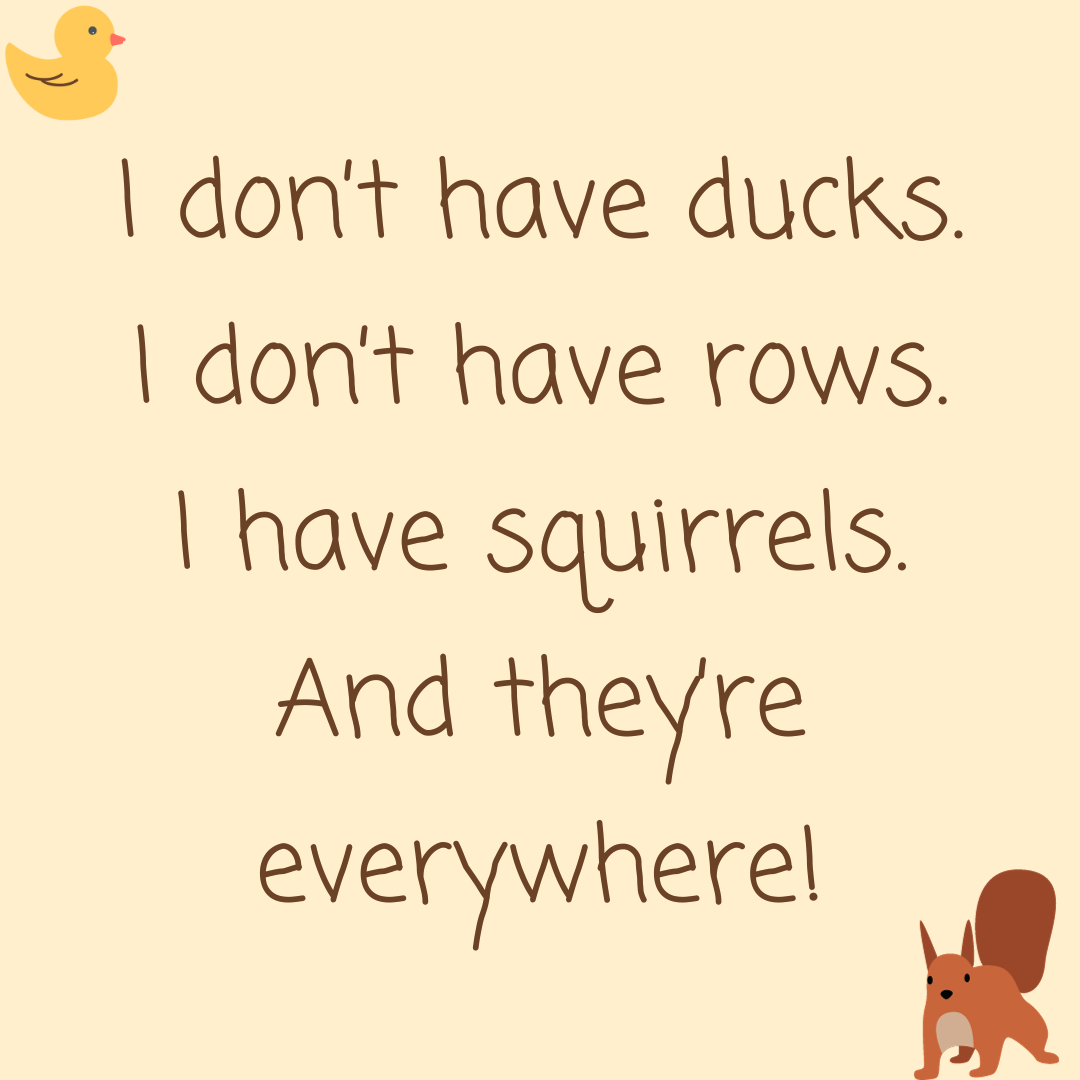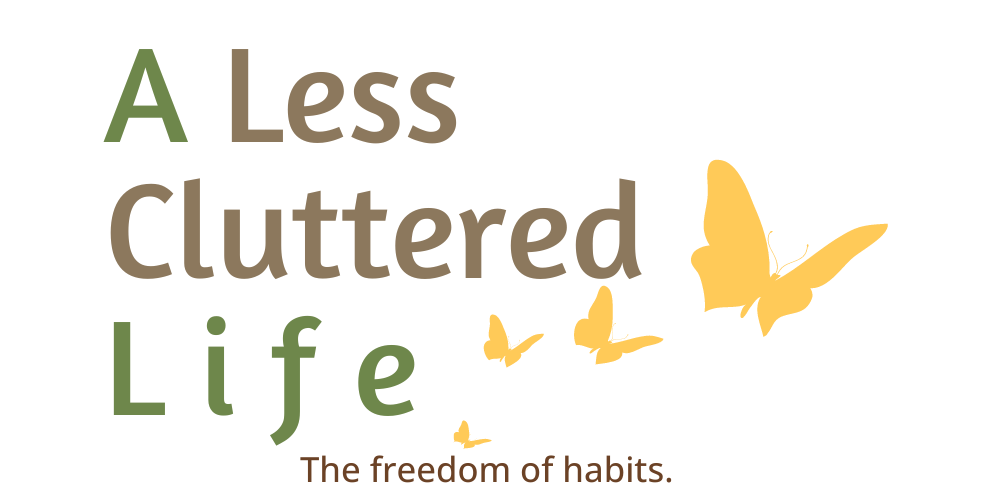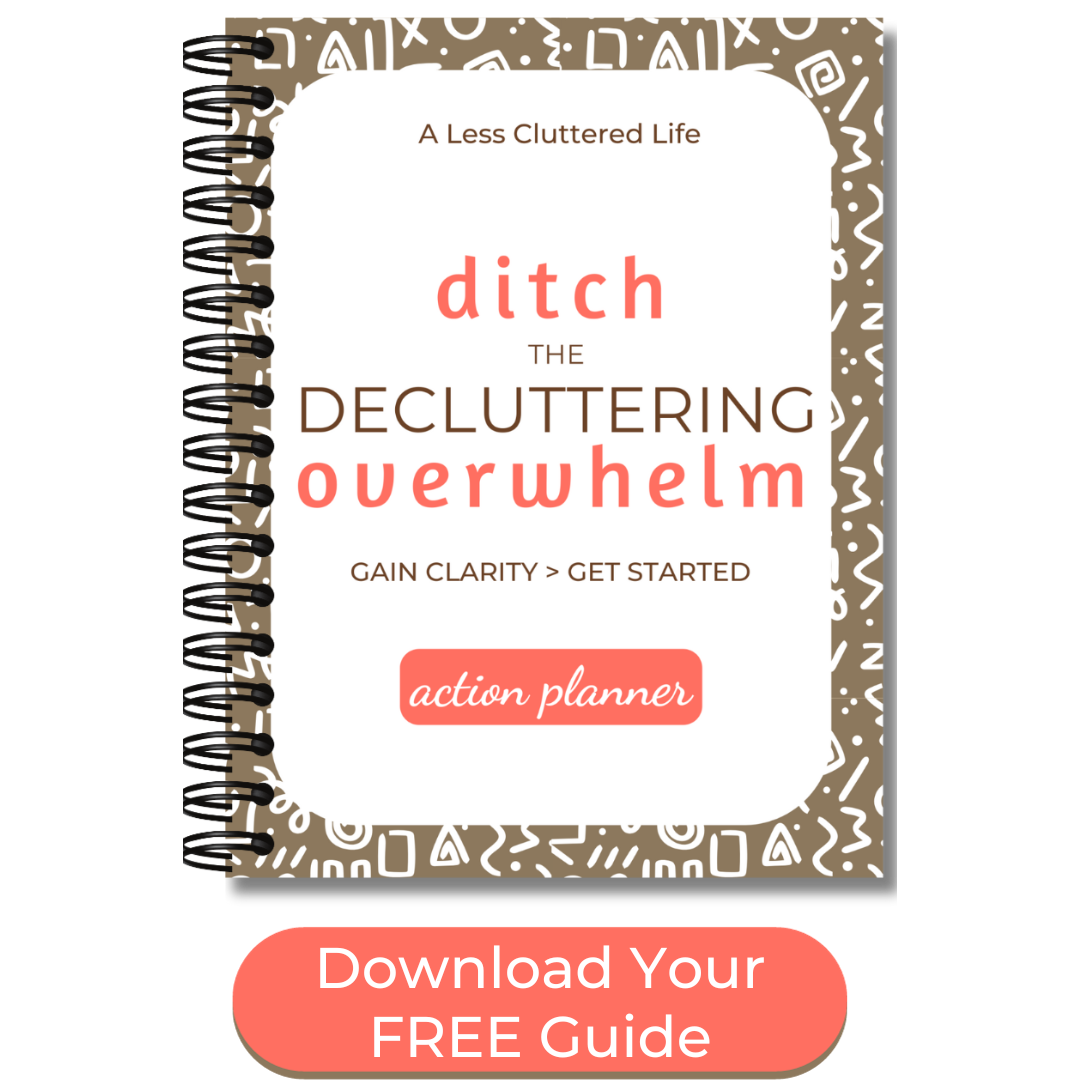|
by Susan McCarthy Think you can't declutter your home because you can't block off an entire day? Think again. These techniques show you how you can get results and create an organized home by using Little Actions and working in Little Spaces. I can clean or declutter for two hours and then I fade. Even two hours is a push, more often driven by stubborn determination and caffeine than my physical energy level. If I go for three hours, I am d-r-a-g-g-i-n-g myself through whatever I’m trying to accomplish. Often, the result of this type of effort is that my productivity level for the rest of the day is virtually nonexistent. I’m running on fumes. When I’m being sensible, I aim for Little Actions – brief, focused tasks that can be completed in approximately 15 minutes. The Benefit of Little ActionsWe often pooh-pooh and dismiss the benefits of working for short time periods. We know that if we work for an hour or two or seven, then we’ll see significant results. The problem is, if we can’t block a few hours from our day to work on a project like decluttering our home, we figure that our only course of action is to wait until we can make the time. Unfortunately, we then end up making no progress while feeling frustrated and trapped by a lack of time, energy, or attention to give to a goal that we know would improve our life. Clearing clutter makes it easier to keep your home clean. You won’t waste time struggling to find things that you know you have but can’t find. You may even find that lifting the burden of always thinking about the need to declutter actually improves your energy. Little Actions, approximately 15-minutes of effort, done daily, is over seven-and-a-half hours a month. This means that even if you never do more than 15-minutes of decluttering a day, you’ll accomplish over 90 hours of work in a year. Can you imagine clearing 90 hours from your schedule for decluttering? I can’t. But making Little Actions allows you to complete a great deal of work almost invisible, without exhausting yourself physically or mentally. Clear Flat Surfaces FirstIf you look around a room and see a lot of things cluttering the flat surfaces in a room – countertops, tables, dressers, shelves, the floor, seats of chairs and couches – then tackling these spaces before delving into drawers, closets, and cabinets – will help you the results of your efforts quickly. One – Set up three boxes You’ll want three boxes or bins near your work area. One will be for trash and recycling. When you fill the bin, you can bring it to your barrels and sort it quickly into your trash and recycling bins. Note, emptying your trash and recycling box could be your Little Action for a day. The second box will be for things you will donate. You may choose to sell things but know that this will take you more time. Posting an item or collection of items online could become your Little Action for the day. Only you can decide if selling the items is a financial necessity that is worth the time you will invest in selling things online or at a yard sale. And you’ll still be donating the items that don’t sell. The third bin is for items that belong elsewhere in your home. These are things that haven’t been put away after they were used. This could be for a couple of reasons. Maybe there is no space to put the item away. Or perhaps you don’t know where the thing belongs. You’ve never given the item a “home.” When this bin is filled, your Little Action for the day could be walking around your home, putting items away or at least getting them into the proper room. Avoid the distraction of feeling you must put these things away perfectly. If this isn’t the room where you are decluttering, starting to work here will mean that you will slow down your effort in the room where you started. Seeing results will motivate you to continue to declutter. Work in Little SpacesAfter clearing the flat surfaces, you can move into the drawers, cabinets, and closets that you use to store items. Little Spaces complement Little Actions. Instead of telling yourself that you’ll empty your entire dresser, you focus on one drawer. If you have the time, you can then move onto the next. Working in Little Spaces is part of the Minimal Mess Method that allows you to work in a focused way and eliminate the overwhelm that comes from taking on a big project and finding yourself with a pile of stuff you have neither the time, energy, nor focus for working through to completion. Most Little Spaces can be completed in 15 minutes, give or take. The exception is when you are faced with a lot of tiny items. Then you may need to return to that Little Space multiple times. A Little Space also gives you a tangible goal to work on. You want to declutter and reorganize the space. You may find this an easier concept to grasp than working for 15 minutes. While clearing flat surfaces, you can focus on timing your efforts. Then, when you move to storage and display (drawers, shelves), you can focus on Little Spaces. Together the techniques allow you to work toward your decluttering goals even when you feel you don’t have the time to get involved in decluttering your home. Focus on One Room at a TimeTo see the results, you want to continue working in one room until you are done. Yes, you will need to carry things to other rooms and put them away, but that’s the limit of your actions. You aren’t ignoring the rest of your home – you’ll still carry out your normal cleaning routine. When you do the laundry, you put it away (if you usually do). Do the tasks you are used to. Decluttering is its own task. Something you are adding to your normal routines. If this sounds intimidating, remember, keep your actions little – 15 minutes, ten if that’s all you can manage. As you focus on this one room, remember to clear the flat surfaces first. Clearing flat surfaces is an important win because seeing open space feels like progress and possibility! Also, it’ll give you the space to sort your belongings when you start going through drawers and cabinets later. As you work, keep filling your trash-recycling, donation, and return home bins. When you fill them, carry out the appropriate action, like putting the box in your car and dropping it off at the local donation center. Set a Timer If you have a difficult time getting started, knowing that you only have to declutter for 15-minutes can break through your resistance. You know there is an end in sight. But what if once you get started you want to keep going? If you have the time and energy, go for it. However, I’d suggest resetting your timer for another 15 minutes. After each of these brief periods of time, you can reevaluate if you choose to continue. Since getting started is a challenge, once you start you may push yourself to do more and more and work yourself into physical and mental exhaustion. Checking in with yourself every few minutes reminds you that it may be time to stop. Also, having the timer encourages you to make decisions. If you truly can’t decide whether you want to keep something, move it into your ‘belongs elsewhere’ bin. The benefit to this is that you can now see what the space looks like without the item. And since you probably aren’t carrying around this bin to take things to their appropriate room every day, you are also creating a buffer for your decisions. When it comes time to put things in this bin away, you may have decided that you can move some of the items to your donations box. Or you may realize that it belongs in another room. Of course, you may decide that you want it back where you found it! Use Excess ItemsOn to the next decluttering technique that you can use when you have no time. You use up excess supplies. For example, you’ve taken advantages of sales on pasta, and you realize that you have enough to last for a few months. You realize that you don’t need to keep this quantity in your pantry based on how often you serve pasta. You put a halt on buying pasta until you come down to a quantity that provides you with what you need without taking up extra space in your home. A sign that it’s time to use up some of your inventory is when you have to store the same item in multiple spaces in your home. Maybe you have rolls of paper towel in your cleaning closet and then you have more on your shelves in your garage. Or you realize that you have a bottle of shampoo in the shower, another under the bathroom sink, one in the linen closet, and a fourth still in the shopping bag set on a chair in your bedroom. Using what you own helps you declutter your refrigerator, freezer, and pantry; your cleaning supply cabinet; your beauty and grooming product storage; your medicine cabinet; and even your craft and hobby supplies.
Using up excess items is “invisible decluttering.” It doesn’t take the place of cleaning your refrigerator, pantry, or cleaning closet, but it means that you’ll have less stuff here when you sort through the space. Also, I find that using up excess craft supplies a creative challenge. Hmmm, what can I do with the yarn left over from other projects? Oh, I haven’t been using the pink cardstock from the rainbow pack I bought. How can I use that color in my cardmaking? Create Space in Your HomeObviously, even these minimal time commitment actions still require time. So how do you make the time to declutter when you have no energy, an over-packed schedule, and stresses that may come from work or caring for others?
No Time to Declutter? No ProblemWhen you think that you don’t have the time, energy, or focus to give to decluttering your home, remember that 15-minutes today is better than zero minutes and the hope that someday you’ll be able to organize your home.
More Resources to Help You When You Don't Have a Lot of Time to Declutter
0 Comments
Your comment will be posted after it is approved.
Leave a Reply. |
Categories
All
Hi, I'm SusanI'm a former teacher who became a professional organizer (and not because I'm a natural-born neatnik). I live with my husband and fluffy cat on a river in Massachusetts. I crochet, make handmade cards, and love reading young adult novels. Learn more about my decluttering journey here. |
|
Copyright 2024 Susan McCarthy - Susan@ALessClutteredLife.com -
Privacy Policies |
Proudly powered by Weebly

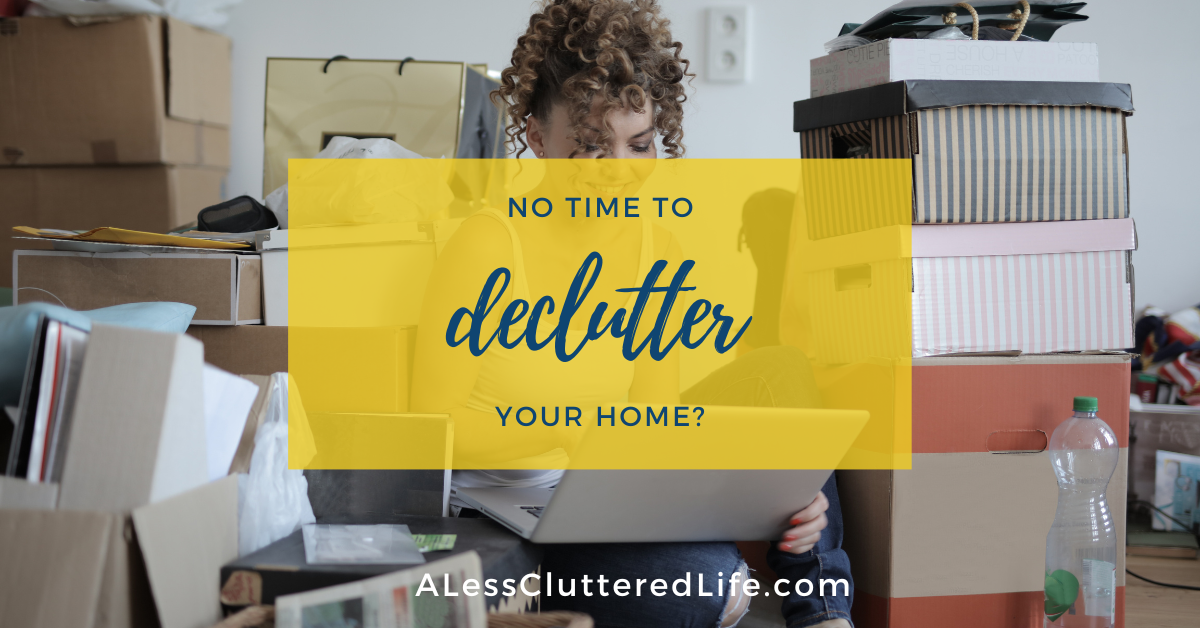
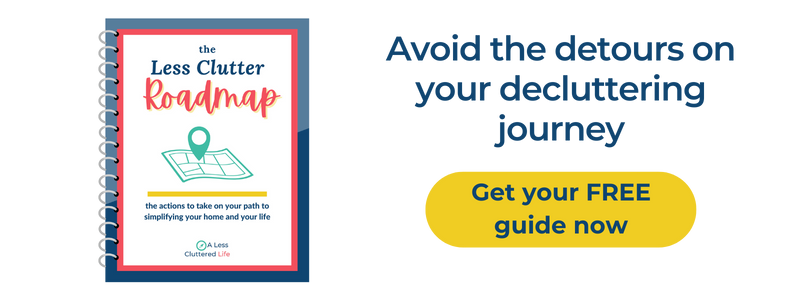
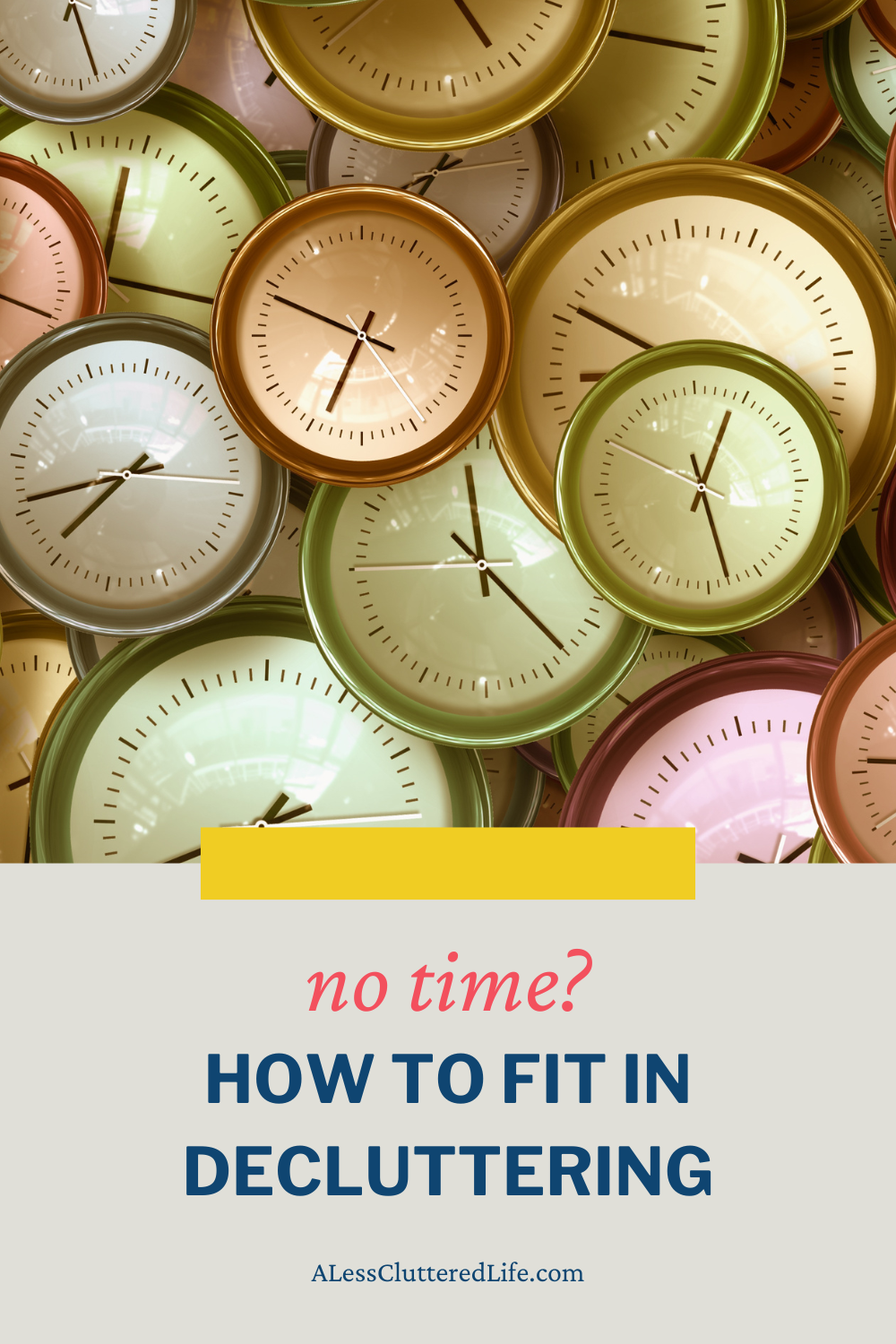
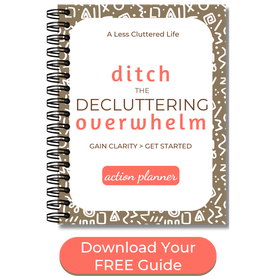

 RSS Feed
RSS Feed
